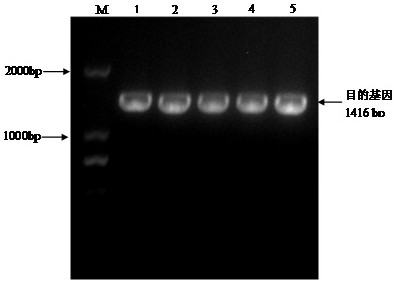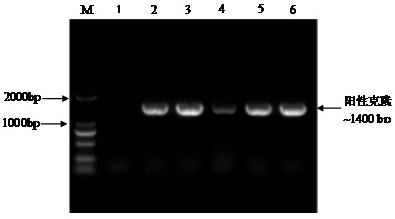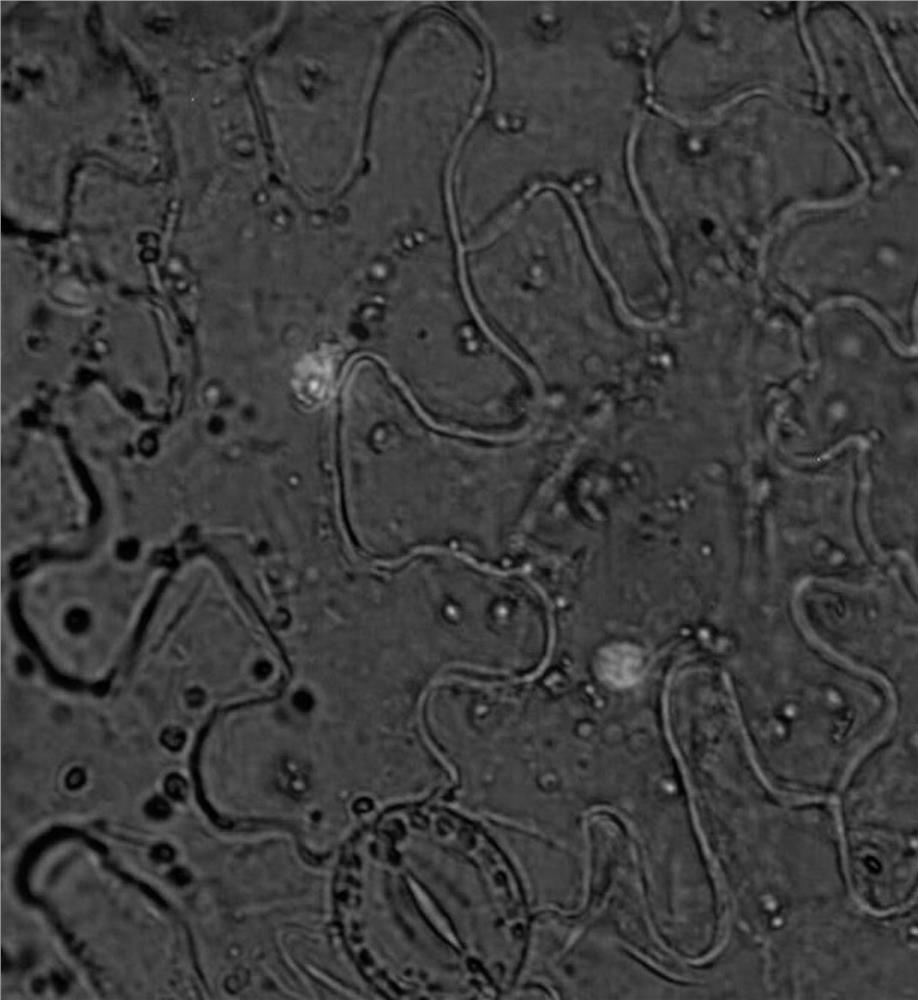Application of a hda3 gene in improving plant resistance to Botrytis cinerea infection
A botrytis and gene technology, applied in applications, plant products, genetic engineering, etc., can solve problems such as no reports on its effects and few studies, and achieve improved disease resistance, reduced disease spots, and increased Botrytis cinerea infection. the effect of the ability
- Summary
- Abstract
- Description
- Claims
- Application Information
AI Technical Summary
Problems solved by technology
Method used
Image
Examples
Embodiment 1
[0032] Example 1: tomato HDA3 Gene sequence analysis, cloning and vector construction
[0033] 1, the present invention obtains tomato from GeneBank database HDA3 gene, analysis showed HDA3 The base is 1800bp in full length (sequence shown in SEQ ID NO.1), belongs to the RPD3 / HDA1 family, and its CDS sequence is 1416bp (sequence shown in SEQ ID NO.2, encoding a protein containing 471 amino acids (sequence shown in SEQ ID NO .3),
[0034] according to tomato HDA3 Specific primers were designed for the CDS sequence of the gene, and the primer sequences were as follows:
[0035] HDA3-F: 5'- ATGGACTCCTCCACCGTAGA CG-3' (SEQ ID NO. 4);
[0036] HDA3-R: 5'-GGAGATAATATCAGTTGGTTGATC-3' (SEQ ID NO. 5).
[0037] Use TRI Reagent to extract the total RNA of tomato, and use the reverse transcription kit to perform reverse transcription to obtain the cDNA chain, and then use it as a template to perform high-fidelity enzyme amplification on the obtained cDNA using the above-mentioned s...
Embodiment 2
[0039] Example 2: tomato HDA3 Construction of overexpression plants
[0040] 1. Tomato HDA3 Obtaining overexpression plants
[0041] The pK7FWG2- HDA3 Transformed into LBA4404 Agrobacterium competent, transformed tomato cotyledons by Agrobacterium injection infiltration method. The transformed callus was then screened with the antibiotic Kan, and an empty vector was set as a control; the medium was changed every 2-3 weeks until regenerated shoots were obtained, and the culture conditions were 16h light (26°C) / 8h dark (18°C ).
[0042] Genomic DNA was extracted from regenerated seedlings, and HDA3 Specific primers HDA3-F and HDA3-R were used for PCR amplification to screen plants capable of amplifying specific fragments. The leaves of the PCR-positive plants were taken, the epidermis was torn off, and the subcellular localization of HDA3 was observed under a laser confocal electron microscope. The result is as figure 1 As shown, HDA3 is localized in the nucleus of toma...
Embodiment 3
[0043] Example 3: Positive tomato HDA3 Phenotype Identification of Gene Overexpression Plants
[0044] 1. will HDA3 Gene Overexpression Plants HDA3-GFP-7 , HDA3-GFP-12 and HDA3-GFP-13 The seeds of wild-type tomato (WT) and wild-type tomato (WT) were sown in nutrient soil and cultured in a greenhouse under the conditions of 16h light (26°C) / 8h dark (18°C). Then, choose about 4 weeks, the same size and growth HDA3 There were 3 groups of gene overexpression plants and wild-type plants, each group contained 3 tomato plants, and the tomato leaves were inoculated from the fungus cake on the cultured plate, and the leaves were placed in a plastic box with a layer of plastic wrap on it to keep the tomato leaves intact. 100% humidity, after keeping at 22°C for 24-48 hours, observe the disease of tomato leaves and make statistics. The result is as Figure 4A and 4B As shown, compared with the wild type, HDA3 The diameter of the lesion on the leaves of the gene overexpressed ...
PUM
 Login to View More
Login to View More Abstract
Description
Claims
Application Information
 Login to View More
Login to View More - R&D
- Intellectual Property
- Life Sciences
- Materials
- Tech Scout
- Unparalleled Data Quality
- Higher Quality Content
- 60% Fewer Hallucinations
Browse by: Latest US Patents, China's latest patents, Technical Efficacy Thesaurus, Application Domain, Technology Topic, Popular Technical Reports.
© 2025 PatSnap. All rights reserved.Legal|Privacy policy|Modern Slavery Act Transparency Statement|Sitemap|About US| Contact US: help@patsnap.com



